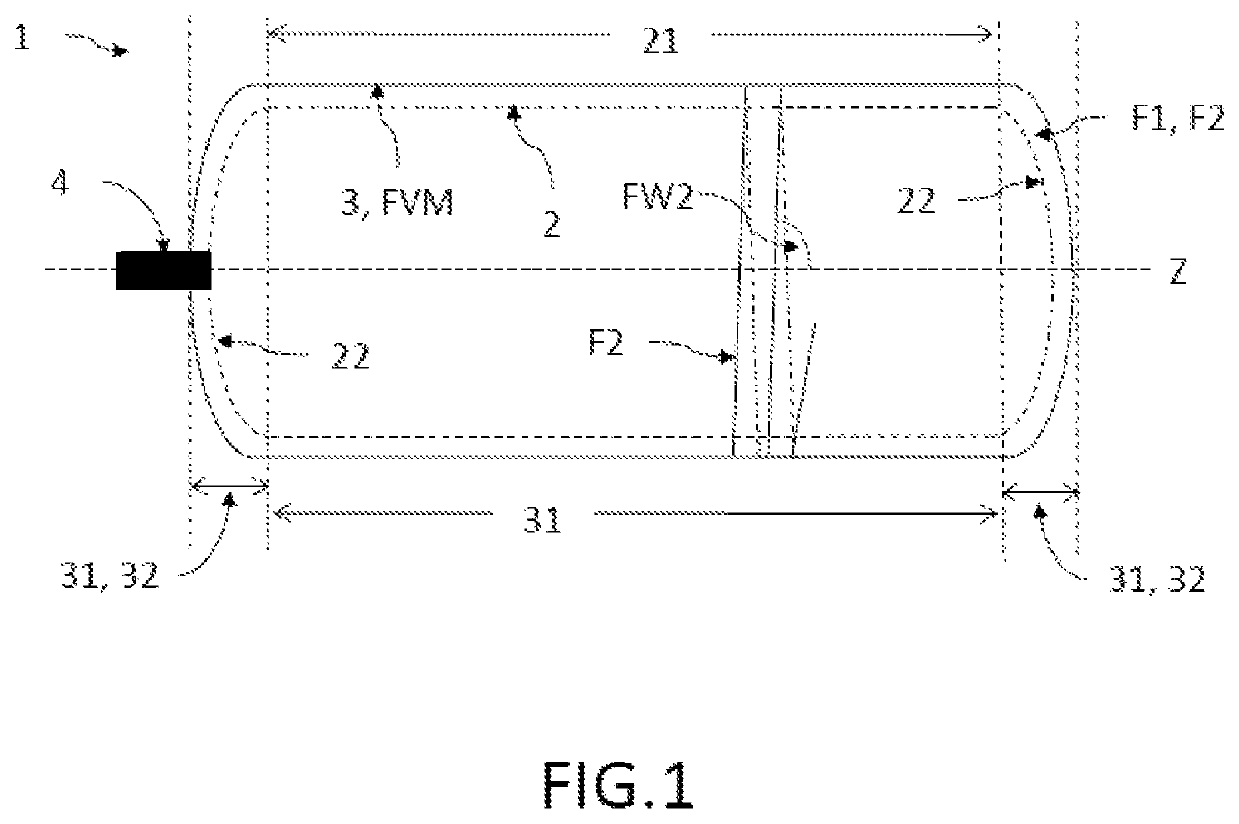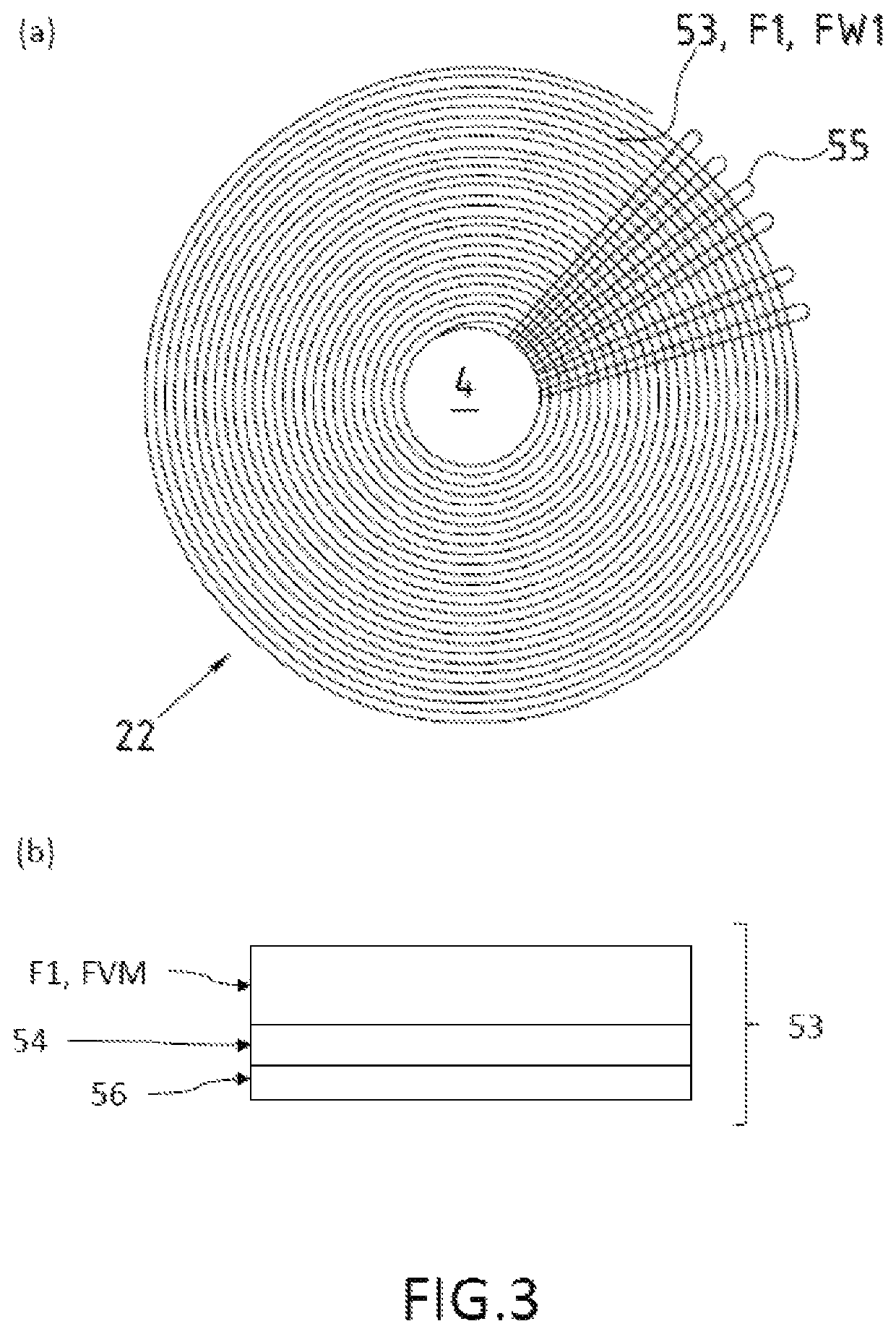Polar cap-reinforced pressure vessel
a pressure vessel and polar cap technology, applied in the direction of vessel construction details, vessel geometry/arrangement/size, mechanical equipment, etc., can solve the problems of excessive transport cost, overbraiding process, and limited variation possibilities with regard to fiber angle, etc., and achieve high torque
- Summary
- Abstract
- Description
- Claims
- Application Information
AI Technical Summary
Benefits of technology
Problems solved by technology
Method used
Image
Examples
Embodiment Construction
[0041]FIG. 1 shows an embodiment of a pressure vessel 1 according to the invention in the lateral section. This pressure vessel 1 comprises an inner vessel 2 of a cylinder-shaped central part 21 and two dome-shaped pole caps 22 respectively closing the central part 21 on both sides and an outer layer 3 wound on the inner vessel 2 for the reinforcement of the inner vessel 2 against a pressure load, wherein the outer layer 3 comprises at least one pole cap reinforcement layer 31 and a pressure vessel reinforcement layer 32 of fiber composite material (FVM for short), wherein the pole cap reinforcement layer 31 at least partially covers the pole caps 22 and the pressure vessel reinforcement layer 32 covers the pole caps 22 and the central part 21. The fiber angle FW2 is thereby an angle of close to 90° to the cylinder axis Z of the central part, preferably FW2 amounts to more than 80°.
[0042]FIG. 2 shows an embodiment of a pressure vessel 1 according to the invention in the region of th...
PUM
| Property | Measurement | Unit |
|---|---|---|
| braiding angle | aaaaa | aaaaa |
| angle | aaaaa | aaaaa |
| angle | aaaaa | aaaaa |
Abstract
Description
Claims
Application Information
 Login to View More
Login to View More - R&D
- Intellectual Property
- Life Sciences
- Materials
- Tech Scout
- Unparalleled Data Quality
- Higher Quality Content
- 60% Fewer Hallucinations
Browse by: Latest US Patents, China's latest patents, Technical Efficacy Thesaurus, Application Domain, Technology Topic, Popular Technical Reports.
© 2025 PatSnap. All rights reserved.Legal|Privacy policy|Modern Slavery Act Transparency Statement|Sitemap|About US| Contact US: help@patsnap.com



